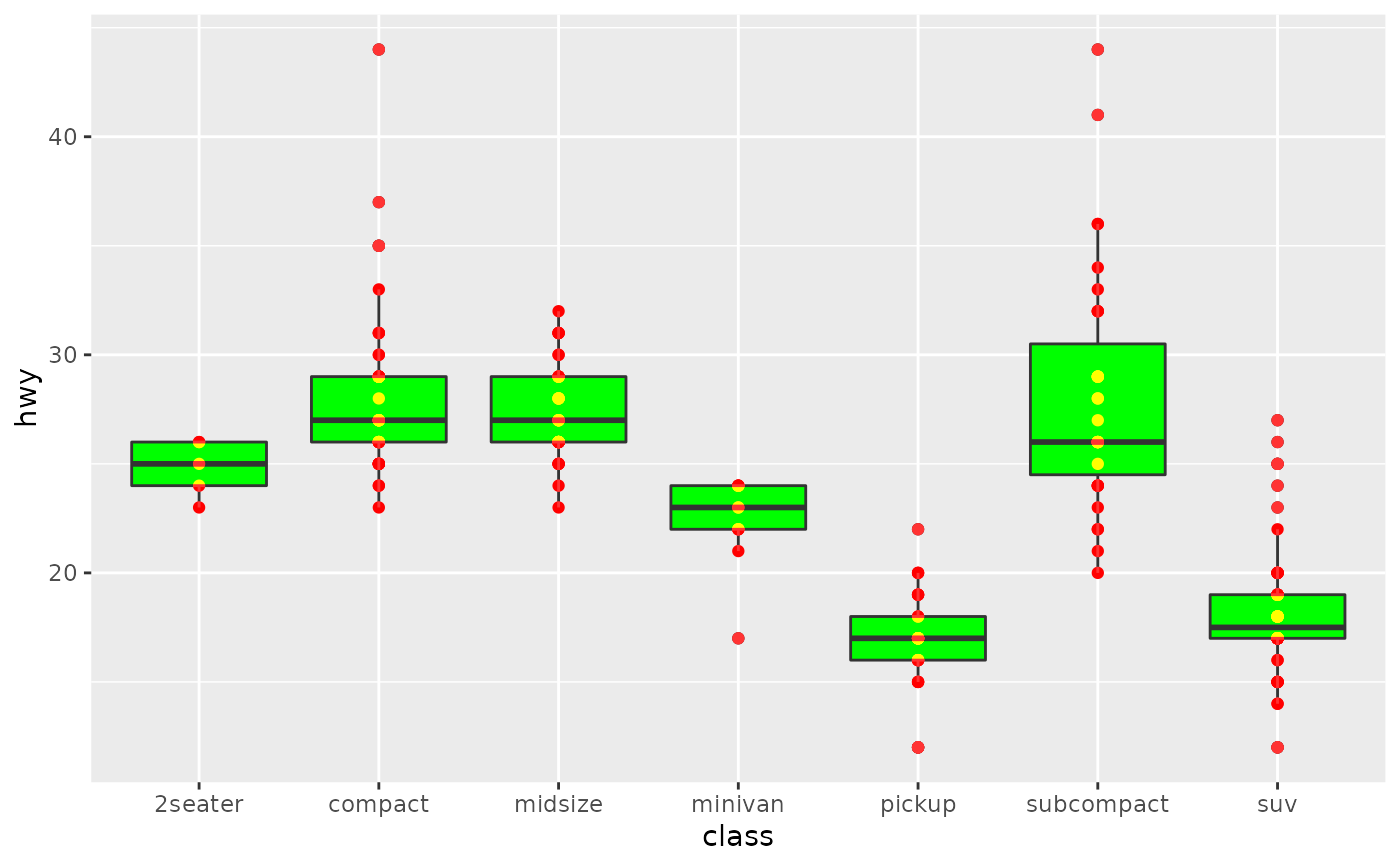Many of the blend types available in with_blend() are variations over the
formula: a*src*dst + b*src + c*dst + d, where src stands for the channel
value in the source image and dst stands for the destination image (the
background). Multiply is e.g. defined as a:1, b:0, c:0, d:0. This filter
gives you free reign over setting the coefficient of the blend calculation.
with_blend_custom(
x,
bg_layer,
a = 0,
b = 0,
c = 0,
d = 0,
flip_order = FALSE,
alpha = NA,
...
)Arguments
- x
A ggplot2 layer object, a ggplot, a grob, or a character string naming a filter
- bg_layer
The background layer to use. Can either be a string identifying a registered filter, or a raster object. The map will be resized to match the dimensions of x.
- a, b, c, d
The coefficients defining the blend operation
- flip_order
Should the order of the background and the overlay be flipped so that
bg_layeris treated as being on top andxbeing below.- alpha
For non-Duff-Porter blends the alpha channel may become modified. This argument can be used to set the resulting alpha channel to that of the source (
"src") or destination ("dst")- ...
Arguments to be passed on to methods. See the documentation of supported object for a description of object specific arguments.
Value
Depending on the input, either a grob, Layer, list of Layers,
guide, or element object. Assume the output can be used in the same
context as the input.
See also
Other blend filters:
with_blend(),
with_interpolate(),
with_mask()
Examples
library(ggplot2)
ggplot(mpg, aes(class, hwy)) +
as_reference(geom_boxplot(fill = 'green'), 'box') +
with_blend_custom(geom_point(colour = 'red'),
bg_layer = 'box', a = -0.5, b = 1, c = 1)
